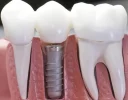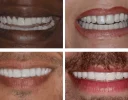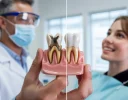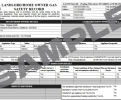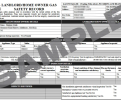What Are the Regional Differences in Dental Care Services?

When you explore dental care across USA, it becomes clear that geography plays a major role in shaping how Americans access oral health services. From the coasts to the heartland, the type, quality, and cost of dental care can differ dramatically. These differences often stem from local economies, insurance coverage, educational outreach, and the availability of dental professionals. Let’s take a closer look at how dental care services vary regionally and what factors drive those differences.
How Does Dental Care Access Differ Between Urban and Rural Areas?
One of the most striking regional differences in dental care services lies between urban and rural communities. Cities typically have a higher concentration of dental clinics, advanced technology, and specialists. Patients living in metropolitan areas have easier access to orthodontists, periodontists, and cosmetic dentists. In contrast, rural residents often struggle with limited options. Many smaller towns face a shortage of dental professionals, forcing patients to travel long distances for even basic procedures.
According to national surveys, rural regions in the U.S. have fewer dental care providers per capita. This imbalance affects preventive care and leads to higher rates of untreated dental issues. While some states have launched mobile dental clinics and telehealth services to bridge the gap, these efforts are still growing. Improving accessibility remains one of the biggest challenges for achieving consistent dental care across USA.
Why Does Dental Care Cost Vary So Much by Region?
Dental care costs fluctuate across regions due to differences in living expenses, insurance networks, and local economic conditions. For example, dental procedures in states like California or New York often cost more than in states like Texas or Ohio. This variation isn’t just about pricing—it’s also about what dental insurance covers.
In some regions, dental offices participate in more insurance plans, making care more affordable. Meanwhile, others operate largely on a private pay basis. The best dental group USA providers aim to offer transparent pricing and flexible payment plans, ensuring patients receive quality care regardless of where they live. Smile Partners USA, for instance, works with dental offices nationwide to maintain consistency in pricing and service quality, helping patients manage their oral health without financial strain.
What Role Does State Policy Play in Dental Care Services?
Each state regulates dental care differently, which contributes to regional disparities. Licensing requirements, Medicaid coverage, and tele-dentistry laws vary widely. States that expand Medicaid benefits to include comprehensive dental coverage generally report higher rates of preventive care visits. On the other hand, states with limited coverage often see more emergency visits and untreated oral health problems.
For instance, some states allow dental hygienists to work independently in community settings, improving access to preventive services. Others require dentist supervision, limiting outreach potential. These policy-driven variations impact both the affordability and accessibility of dental care across USA. By understanding these differences, patients and providers can better advocate for consistent national standards.
How Does Education Influence Dental Health Awareness Regionally?
Dental health education also differs significantly across regions. In urban and suburban school districts, children often receive early exposure to dental hygiene programs, fluoride treatments, and regular dental checkups. In contrast, some rural or low-income areas lack such programs, leading to higher rates of cavities and gum disease.
Public health campaigns, often supported by organizations like Smile Partners USA, emphasize preventive care through education. Teaching families about brushing techniques, proper nutrition, and regular dental visits builds a foundation for lifelong oral health. Regions that invest in education tend to report better dental outcomes and reduced healthcare costs over time.
What Technologies Are Shaping Modern Dental Care by Region?
Advancements in dental technology have transformed patient care, but their adoption rates vary regionally. Major cities and affluent areas often lead in implementing innovations such as digital X-rays, 3D imaging, and same-day crowns. These tools improve diagnostic accuracy and reduce treatment times. Meanwhile, smaller or rural practices may struggle to invest in such high-end equipment due to budget constraints.
However, this gap is slowly closing. National dental organizations and networks like the best dental group USA are expanding access to modern technologies by supporting smaller practices. The goal is to create a more uniform standard of care so that patients in every region can benefit from the latest advancements in dental treatment.
Why Do Preventive Dental Practices Differ from Region to Region?
Preventive care habits—like regular checkups, cleanings, and fluoride treatments—vary across the country. Studies show that residents in the Northeast and Pacific regions are more likely to visit the dentist regularly, while those in the South and Midwest may visit less often. This trend reflects differences in income, insurance coverage, and cultural attitudes toward oral health.
In areas where dental visits are part of routine healthcare, people experience fewer major dental issues later in life. Encouraging preventive habits through workplace programs, school initiatives, and community outreach is essential to closing this gap. It’s one of the key strategies used by many dental networks aiming to enhance dental care across USA.
How Do Cultural and Lifestyle Factors Shape Regional Dental Care Trends?
Cultural diversity also influences how people approach dental health. For example, diet plays a significant role in oral health outcomes. Regions where sugary or acidic foods are common may see more cavities and enamel erosion. Meanwhile, areas that prioritize balanced diets rich in calcium and fiber often have better dental health statistics.
Lifestyle factors such as tobacco use, alcohol consumption, and stress levels also vary by region, impacting gum health and tooth decay rates. Understanding these cultural and lifestyle differences helps dental professionals design more personalized treatment plans and preventive strategies tailored to specific populations.
What Is the Future of Regional Dental Care in the USA?
The future of dental care in America points toward greater accessibility and consistency. Tele-dentistry, mobile clinics, and community-based programs are helping bridge regional divides. As technology advances and awareness grows, even remote communities will have improved access to dental professionals.
Organizations like Smile Partners USA are leading this transformation by integrating modern technologies, expanding partnerships, and standardizing care models. Their mission is to ensure that no matter where you live—whether it’s a busy city or a small town—you can receive reliable, high-quality dental services from trusted professionals.
The long-term goal is simple: to make top-tier dental care accessible and affordable for every American. By sharing resources, improving education, and advocating for supportive policies, we can reduce disparities and create a healthier, brighter smile for the entire nation.
Conclusion: Striving for Equal Dental Care Across USA
Regional differences in dental care services are shaped by a mix of economic, cultural, and policy factors. From cost and technology to education and access, each region faces unique challenges. Yet, these differences also present opportunities for innovation and collaboration.
By supporting organizations committed to patient-centered care and leveraging the strengths of the best dental group USA, we can move toward a more unified healthcare system. Equal access to dental services not only improves individual well-being but also strengthens communities across the nation. As more providers and policymakers work together, the dream of consistent, high-quality dental care across USA becomes an achievable reality—one smile at a time.
ABOUT ME

Welcome to my blog Artcle slurp. We share latest article for all niche. If you want to publish your article then mail me on articleslurpblog@gmail.com

